Fillrate and shading
Let's take a look at the cards' basic vital statistics.| Card | GeCube X800XLA-VIVO | GeForce 6800 GT | GeForce 6800 Ultra | RADEON X850 XT PE |
| Interface/speed | AGP 8x | PCI-Express x16 | PCI-Express x16 | PCI-Express x16 | Onboard memory | 256MB | 256MB | 256MB | 256MB | Core speed | 400MHz | 350MHz | 425MHz | 540MHz | Rendering pipelines | 16 | 16 | 16 | 16 | Fillrate (multi-texturing) | 6.4GTexels/s | 5.6GTexels/s | 6.8GTexels/s | 8.64GTexels/s | Memory interface | 256-bit | 256-bit | 256-bit | 256-bit | Memory speed | 980MHz | 1000MHz | 1100MHz | 1180MHz | Memory bandwidth (max) | 31.36GB/s | 32.00GB/s | 35.20GB/s | 37.76GB/s | Retail price | £225 | £260 | £335 | £335 |
Looking now at how theoretical figures match up with 3DMark05's fillrate and shading tests.
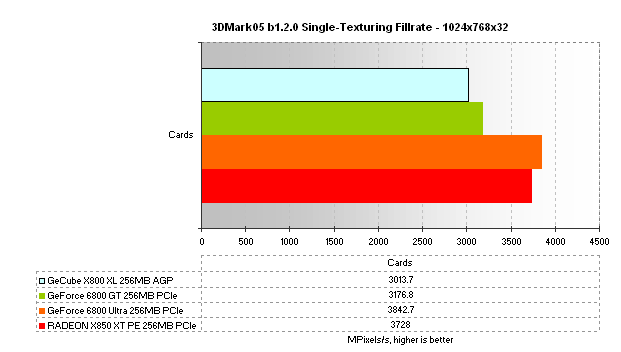
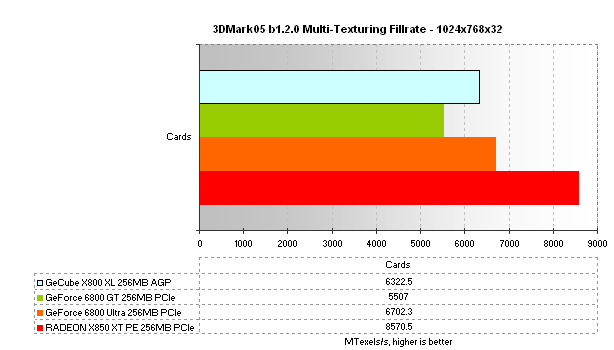
A faster core speed than its nearest competitor pushes GeCube's X800 XL's multi-texturing performance to near-GeForce 6800 Ultra levels.
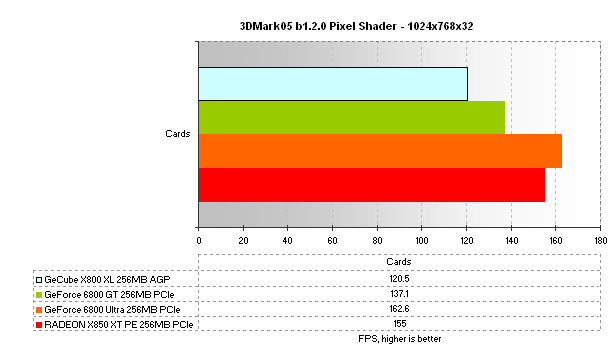
Pixel shading performance, however, isn't particularly impressive.
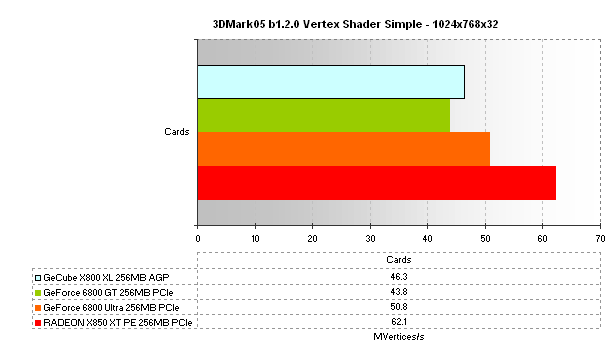
Vertex shading has always been an ATI forte. The cheapest of our quartet is no slouch in the simple shading test.
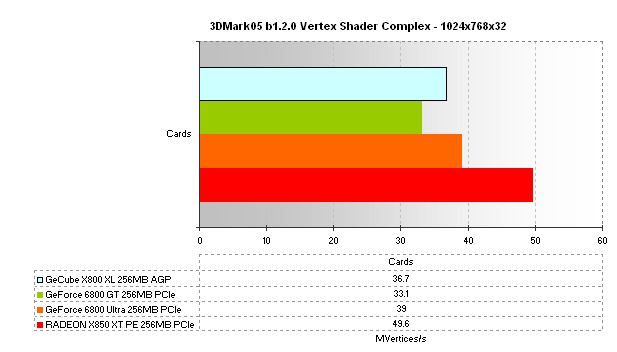
That remains true for the complex test, as well.









